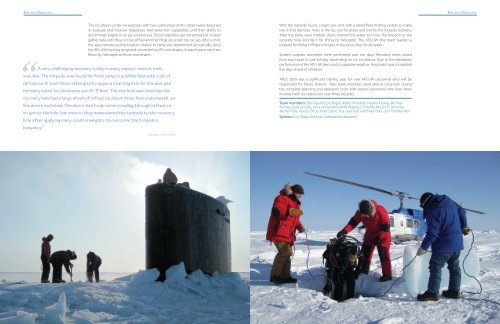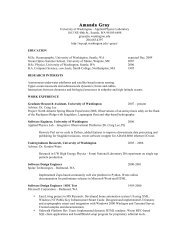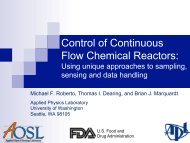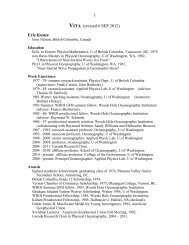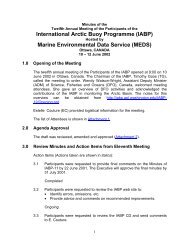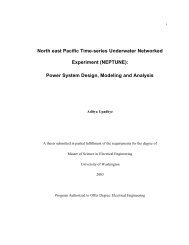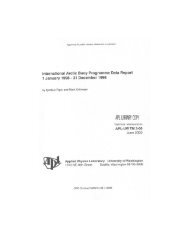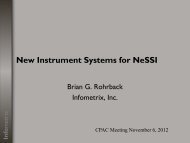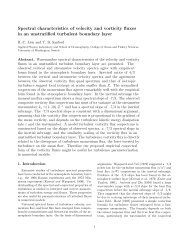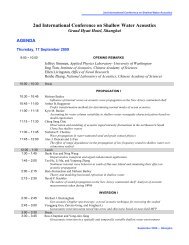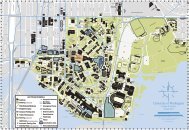2009 Biennial (PDF, 12 MB) - Applied Physics Laboratory-University ...
2009 Biennial (PDF, 12 MB) - Applied Physics Laboratory-University ...
2009 Biennial (PDF, 12 MB) - Applied Physics Laboratory-University ...
Create successful ePaper yourself
Turn your PDF publications into a flip-book with our unique Google optimized e-Paper software.
ReseARCh highLights ReseARCh highLights<br />
The U.S. Navy’s under-ice exercises with two submarines at the station were designed<br />
to evaluate and improve torpedoes, their detection capabilities, and their ability to<br />
discriminate targets in an ice-covered sea. These torpedoes are not armed but instead<br />
gather data until they run out of fuel and then float up under the ice cap. After a shot,<br />
the approximate resting location relative to camp was determined acoustically using<br />
the APL-UW tracking range and converted to GPS coordinates. A search team was then<br />
flown by helicopter to those coordinates.<br />
“<br />
A very challenging recovery today in every aspect: search, melt,<br />
and dive. The torpedo was found far from camp in a rubble field with a lot of<br />
rafted ice. It took three attempts to auger a starting hole for the dive and<br />
recovery holes. Ice thickness was 8–9 feet. The dive hole was clear but the<br />
recovery hole had a large sheet of rafted ice about three feet underneath, so<br />
the divers switched. The divers had to do some crawling through rafted ice<br />
to get to the hole, but once in, they maneuvered the torpedo to the recovery<br />
hole after applying many counterweights to overcome the torpedo’s<br />
buoyancy.”<br />
– Monday, 23 March <strong>2009</strong><br />
With the torpedo found, a team was sent with a diesel-fired melting system to make<br />
two 3-foot diameter holes in the ice, one for divers and one for the torpedo recovery.<br />
After the holes were melted, divers entered the water to move the torpedo to the<br />
recovery hole and rig it for lifting by helicopter. The APL-UW dive team readied a<br />
torpedo for lifting in fifteen minutes or less once they hit the water.<br />
Sixteen torpedo recoveries were performed over ten days. Recovery times varied<br />
from two hours to one full day depending on ice conditions. Due to the exemplary<br />
performance of the APL-UW team and cooperative weather, the project was completed<br />
five days ahead of schedule.<br />
APLIS <strong>2009</strong> was a significant training year for new APL-UW personnel who will be<br />
responsible for future stations. New team members were able to cross-train during<br />
the complete planning and operation cycle with veteran personnel who have been<br />
involved with ice stations for over three decades.<br />
Team members: Paul Aguilar, Eric Boget, Adam Huxtable, Frederick Karig, Michael<br />
Kenney, Sean Lastuka, Trina Litchendorf, Keith Magness, Timothy McGinnis, Nicholas<br />
Michel-Hart, Francis Olson, Peter Sabin, Troy Swanson, Keith Van Thiel, and Timothy Wen<br />
Sponsor: U.S. Navy and Arctic Submarine <strong>Laboratory</strong><br />
38 APL–UW <strong>2009</strong> BienniAL RePoRt APL–UW <strong>2009</strong> BienniAL RePoRt 39


